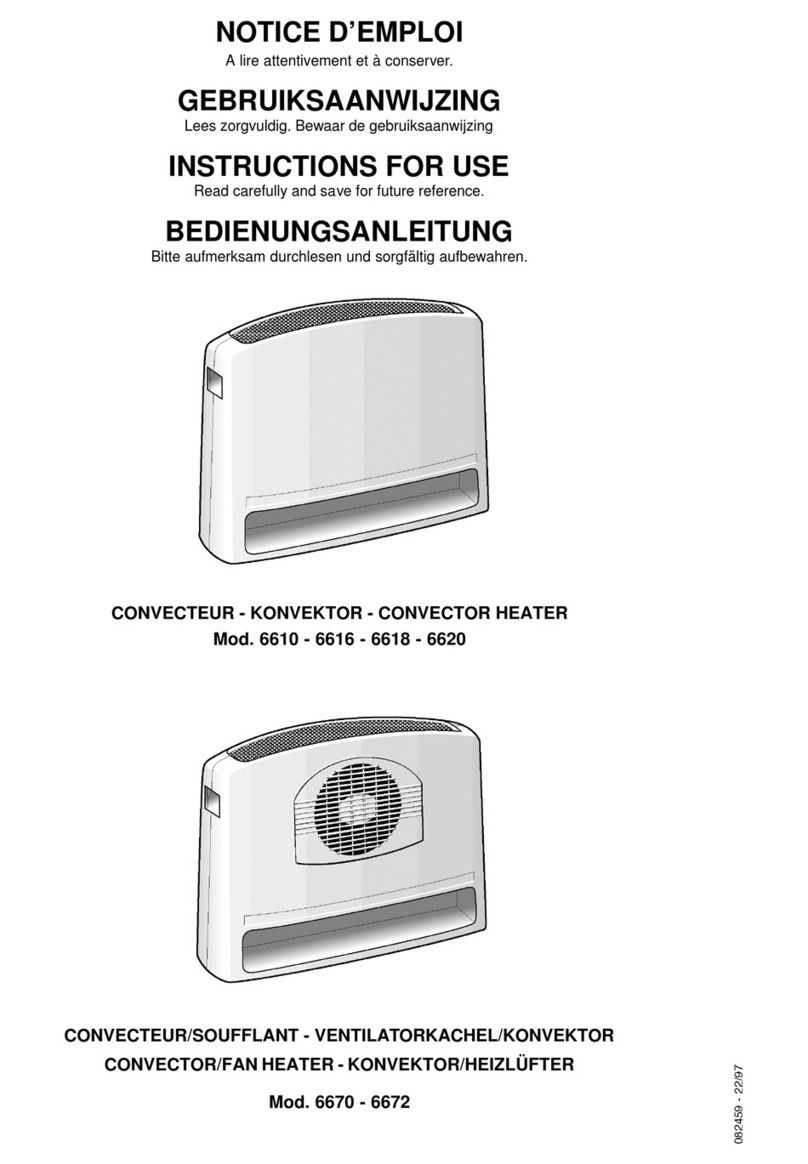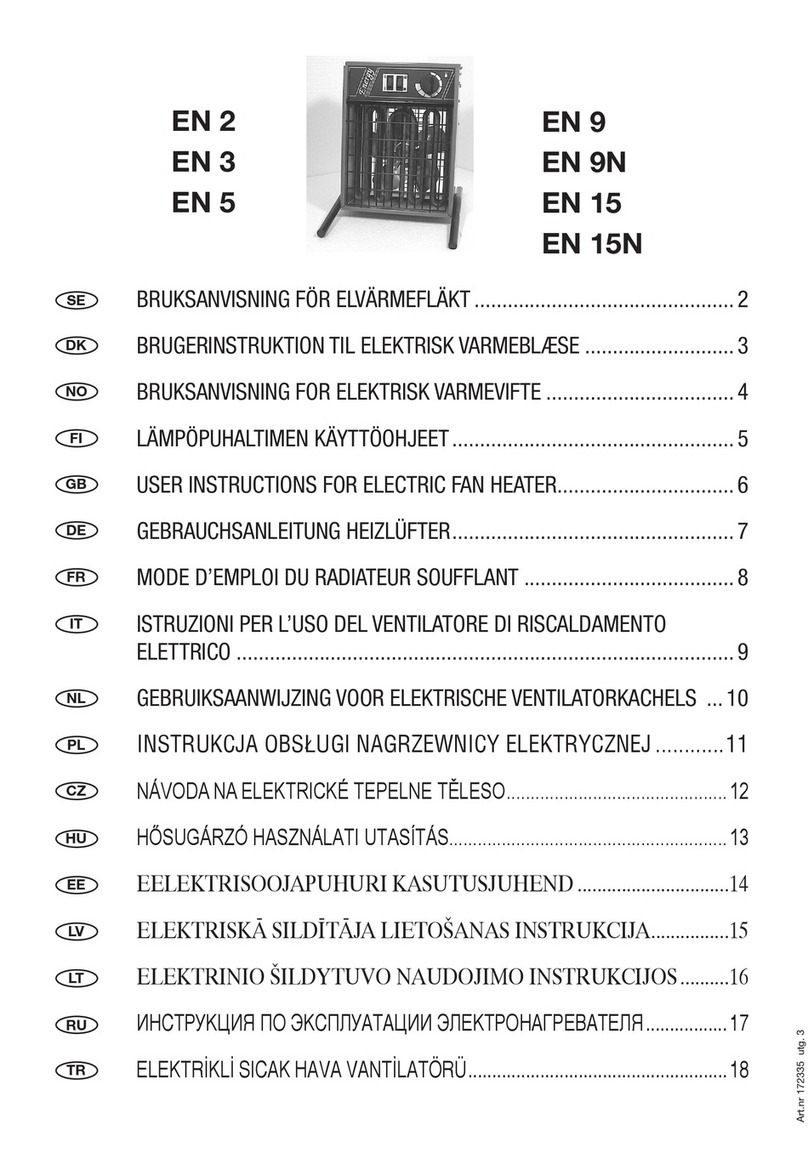
104829 (02/07) Page 2 of 2
correctly.
•The patio heater should have been supplied with a special 27mm clip on regulator with suitable clips to a
hose complying with BS3212 type 2. If a standard butane (28 mbar) or propane 37 (mbar) regulator is fitted
your local Calor Gas Dealer will be able to give advice on a suitable replacement
•The patio cylinder (Green with red shroud) and fitted with a 27mm valve should be used.
•The regulator should be in the “off” position when not in use.
•Heaters should be regularly serviced by a competent person in accordance with the manufacturers
instructions, particularly prior to the start of a new season.
•It is a legal requirement for heaters supplied by landlords for use at their premises to have heaters
checked for safety at intervals not exceeding 12 month and this must be carried out by a CORGI
registered installer under the Gas Safety (Installation and Use) Regulations. The term ‘Landlord’ is
widely defined. If in doubt refer to the Regulations, or the Guidance both of which are available from
HSE Books (01787 881165).
•The condition of the flexible hose connecting the regulator to the heater inlet should be checked monthly and
each time the cylinder is replaced. If it shows signs of cracking, splitting or other deterioration, it should be
exchanged for new hose of the same length, manufactured to BS 3212 type 2 or BS EN 1763
•LPG is odourised to enable accidental releases to be detected by smell. If a persistent gas smell is present,
the heater should not be used, or if alight, the gas supply should be turned off at the regulator. The cause
should be investigated and rectified before the heater is used again.
•Please ensure the safe use and storage of cylinders. A separate information leaflet Using Calor Gas Safely is
available from your local Calor Dealer.
Changing your cylinder.
If you require further advice please contact the
Technical Help Desk at Tachbrook Park (01926 318497)
CALOR GAS EMERGENCY SERVICE – 0845 7 444999
(ALL CALLS CHARGED AT LOCAL RATE)
Calor Gas Limited has made every effort to ensure that the information contained within this publication is accurate. Its content
should be used as guidance material and not as a replacement of current regulations or existing standards.
All rights reserved. No part of this publication may be reproduced, stored in a retrieval system or transmitted in any form or by
any means, electronic, electrostatic, magnetic tape, mechanical, photocopying, recording or otherwise, without permission in
writing from Calor Gas Limited.
© Calor Gas Limited 2007
Published by the Safety, Health and Environment Department.
This guidance is obtained from the LP Gas Association TM No 64 and EN 14543:2005
Patio Gas Cylinders
2. Turn the regulator
on/off switch
CLOCKWISE into
the OFF position –
there will be an
3. Place the regulator down onto
the cylinder valve and press
downwards firmly until you
hear the regulator “click” into
place.
4. To ensure that the regulator is
correctly engaged with the valve,
in the OFF position try to pull the
regulator upwards. If it
disengages from the valve please
repeat from procedure 2.
5. To turn the gas on, turn
the gas ON/OFF switch
ANTI-CLOCKWISE to
the position. ALWAYS
turn the switch to the OFF
position after use.
A.Turn the gas switch
CLOCKWISE to the OFF position.
B.For the Comap 1580 regulator press the push button on the lower part and lift the regulator from the valve. (Fig a.)
For the Reca “Quick-On” 634PR regulator press horizontally on the handle then pull upward. (Fig b.)
For the SRG 547 regulator lift the horizontal lever extending from regulator and remove regulator from valve. (Fig c.)
IMPORTANT
If the on/off switch gets stuck
when turning the supply on, it
means that the regulator has
been connected incorrectly. In
this event the regulator must be
disconnected and the correct
steps to reconnect repeated
from the beginning.
Fi
b.
1. There is no
protective cap.
Check the top of
the valve is
Fi
a.
C. There is no cap to be
re
laced
For Comap Type 1590 AE Reca Type
“Quick-On 634PR and SRG Type 547 27mm
li
-
n R
lat
r
Fi
c.





















